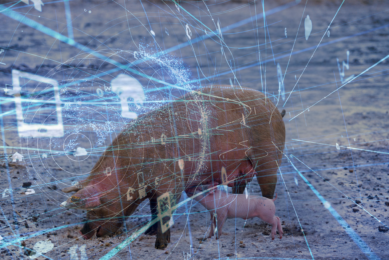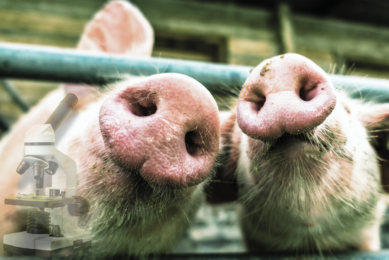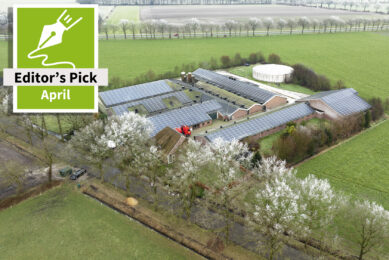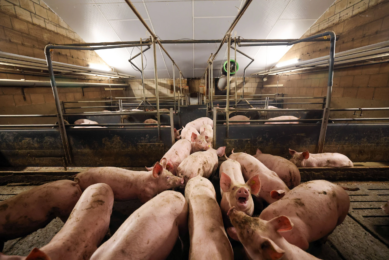Increase feed efficiency to maximize returns
Since feed costs represent the largest portion of cost of production, it also represents the greatest opportunity for reducing costs- in particular the pig grow-finish barn. Feed efficiency can have the single biggest impact on feed cost per pig.
With the current high feed costs, there has been a greater push toward managing feed efficiency within operations.
There are a number of considerations that play a role when examining feed efficiency in pork production, according to Ken Engele, information services manager, Prairie Swine Center.
These are environmental (temperature, humidity, air circulation), social (space allocation, group size, re-grouping), immunological (disease, pathogen concentration), and management (particle size, feeder adjustment).
Engele provides the following factors that impact feed efficiency:
Genetics: Are you feeding according to the maximum lean yield potential of your herd?
Feed processing: Understanding the impact of pelleting and size of grind. Industry standard for particle size is 600-800 microns. Kansas State University demonstrated a 1.2% improvement in feed efficiency for every 100 micron reduction in particle size relative to the optimal range. Pigs fed pelleted diets vs. mash have 3-6% better feed efficiency.
Management: Ensure feeders are checked daily and feeders are adjusted for 40% pan coverage to maximize feed efficiency, by maximizing performance and minimizing feed wastage. In addition, a 3% reduction in pen space translates to a 1% reduction in feed intake and growth rate.
Dietary energy level: Use of alternative feed ingredients typically provides a lower energy density within the diet, thereby increasing the amount of feed required per pig. Pigs will typically compensate for the lower energy diets by increasing their intake, subsequently having a significant impact on feed efficiency. Poorer feed efficiency may be offset by cheaper diet cost. It is very important to monitor this relationship.
Environmental temperature: Ensure pigs are kept within their thermal comfort zone. Cold temperatures increase feed intake while hot temperatures reduce feed intake.
Disease challenge: Healthy pigs grow faster. Pigs are able to utilize nutrients for growth rather than fight disease. Disease challenges can also increase mortality in the finishing herd and can have significant impact on whole herd efficiency.
Breeding herd productivity: On average, a sow will consume approximately one tonne of feed per year. The greater number of pigs produced per sow will improve whole herd feed efficiency.
Market weight: Feed efficiency worsens as pigs get heavier. Ensure pigs are marketed at their optimal weight to minimize feed cost, maximizing profit potential.











